An interview with André Botha about raptor conservation in South Africa

It is a pleasure to write an introduction for an interview with André Botha.
André is a life-long birder with a special passion for raptors who loves the bush. He has travelled widely in southern Africa (and other parts of the world) and is at home in the lowveld, Kalahari, Zambezi delta, watching the Black Eagles of Johannesburg and many other places. I have travelled in the bush with him on numerous occasions and I have always enjoyed his calm, measured approach – except for odd occasions with tuskless cow elephants!
As a partial Luddite, my affection for modern technology is strained at best, but André utilises it at every opportunity to achieve his goals – particularly with photographing and recording birds. I enjoy watching how André logs the location of virtually every bird he sees whilst travelling and never ceases to share these data with the rest of the birding community in southern Africa.
Apart from his personal aims and activities, probably the thing that is most obvious to me about André is his ready willingness to work and collaborate with anyone whose aims are similar – that is, the conservation of raptors. It is this inclusiveness that has been a major part of the successful transition from the previously separate Raptor Conservation and Vulture Study Groups into the Birds of Prey Programme of South Africa’s Endangered Wildlife Trust.
Throughout his travels and experiences before joining the Endangered Wildlife Trust, André established an effective network of contacts with people who have a like-minded goals – the conservation of nature, landscapes and, of course, raptors. This network is now a large part of his work with the Birds of Prey Programme and it is growing all the time.
I look forward to working with André well into the future and in the meantime enjoying his easy going company. No doubt his thoughts on raptor conservation in South Africa will be of interest to many readers.
Campbell Murn – The Hawk Conservancy Trust
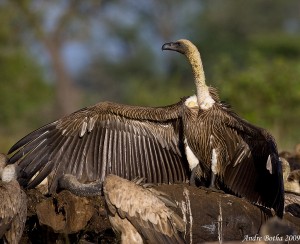
1)How many diurnal raptor species do currently breed in South Africa?
Due to the fact that we prefer to focus on the entire southern African region, I will answer this question in this context. There are 54 species of diurnal raptors known to breed in southern Africa.
2) Are there species of which all or large parts of the world population breed in South Africa?
Five raptor species are considered endemic or near-endemic to the region, namely the Cape Griffon Gyps coprotheres, Forest Buzzard Buteo trizonatus, Jackal Buzzard Buteo rufofuscus, Black Harrier Circus maurus and Southern Pale Chanting Goshawk Melierax canorus.
3) What is the conservation status of those species?
Two of these are listed in the Red Data Book of Birds of South Africa, Lesotho and Swaziland (Barnes, 2000), namely the Cape Griffon and Black Harrier.
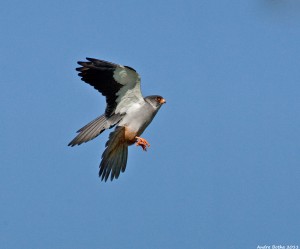
4) How is the overall situation for raptors in South Africa? How many species are endangered?
23 Species of raptors and owls are currently listed in the above publication, approximately 25% of the country’s raptor diversity.
5) In many parts of the world electrocution is a serious problem to large raptors. How is the situation in South Africa and what is done to reduce the number of victims?
Sadly, the situation is not much different in South Africa and we have been working with Eskom, our major supplier of electricity in the country for many years to attempt to address the impact of electrocutions and collisions with lines by birds. We are in a fortunate position as Eskom acknowledges the fact that their infrastructure impacts on raptor and other bird populations and attempts to reduce this where possible. South Africa’s electricity infrastructure is expected to double over the next 20 years due to the increasing demand for this resource. It is vital that we work with the engineers who will be responsible for this to ensure that raptors and their habitats are affected as little as possible. Alternative methods of electricity generation are also finding their way here and we are aware of many applications for the establishment of wind-farms, especially in the arid western parts of the country. We have the opportunity to comment on and influence the siting of these to hopefully minimize the impact thereof and Jon Smallie and his team from the EWT’s Wildlife Energy Programme is to ensure that this is done.
6) How important are large predators like Lions, Leopards or Cheetahs for raptors, for example as a provider of carrion or other ecological effects they have on the habitat where those large carnivores live?
With the exception of large conservation areas such, as the Kruger National Park and adjacent reserves, large mammalian predators do not play a significant role as providers of food for avian scavengers. In fact, the presence of such animals on land outside of conservation areas could indirectly have a negative impact on raptors as they often become the victims of secondary poisoning due to baits placed out by livestock owners to try and control predators.
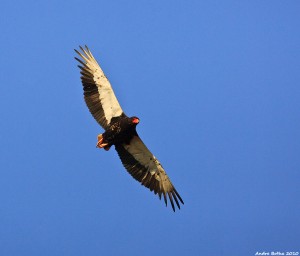
7) What is the current status of the African Crowned Eagle in South Africa? What threats does the species face, how has the population developed during the last decades and are there any conservation projects for the species?
It is currently listed as Near-Threatened (Barnes (2000) and has a limited and fragmented distribution due the degradation of its indigenous forest habitat in the country. The Crowned Eagle Action Group currently monitors about 28 known and historical nesting sites of the species in the forestry areas of the Mpumalanga province and is actively working with foresters to ensure that active nest sites are not affected by their activities. A few pairs of Crowned Eagles have actually adapted to the introduction of alien species and now nest in exotic plantations rather than indigenous forest.
8 ) How is the situation for Martial Eagles?
The species is listed as Vulnerable in South Africa (Barnes, 2000) and the distribution of this species was severely reduced due to factors such as habitat loss, persecution and poisoning. As with several other large raptors, the bulk of the South African population now occur in large conservation areas.
9) How do you see the future of Martial Eagles and African Crowned Eagles in South Africa?
With growing human populations and the accompanying demand for resources, the habitats that these species depend on faces continued pressure. It is imperative that we encourage land-owners and communities to strive to manage such habitats in such a way that these birds are able to exist without the threats that historically and currently affects them. This can and has been done to good effect, e.g. in the southern Kalahari, and examples such as these should be used to encourage us to continue and expand on the successes achieved in the past.
10) Do vultures suffer from illegal poisoning in South Africa?
Yes, poisoning continues to be a major threat to vulture populations in the country. A major current concern is the fact that birds are harvested for the muthi-trade in certain areas and poisoning is one of the easiest methods that poachers use to acquire birds.
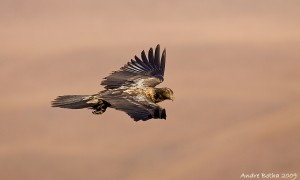
11) Is overhunting of ungulates and other mammals a problem for vultures and other carrion eating birds like the Bateleur or Tawny Eagles?
Over-hunting per se is not really a problem at present, although this has certainly had an effect historically when most of the large herds of game on the plains of southern Africa were extirpated by settlers resulting in the reduction of available food for raptors and vultures. Popular opinion is that the establishment of the game farming industry in South Africa since the 1970’s has benefitted raptors and vultures. This is a statement that is not necessarily based on fact and is something that needs to be investigated.
12) Is there a difference in the population development of raptors inside and outside of protected areas?
Yes, there certainly is a significant difference and certain small protected areas are simply not large enough to sustain viable populations of raptors in their current state. Unless we address this as a matter of urgency, raptors may in due course only occur in protected areas.
13) How is the attitude towards raptors among the people living in South Africa?
Attitudes towards raptors vary, often from individual to individual and land-owner to land-owner. We have found that most land-owners are generally pleased to have raptors on their property, but that this attitude may change in times of drought or other difficulty when conflict may arise and some land-owners may have the same approach to raptors than they do to predators such as jackal and caracal.
14) Are raptors still illegally persecuted?
Sadly, yes. All raptors are protected by legislation, but this does not seem to deter individuals intent on the persecution of raptors or any other wildlife.
15) Some raptors may adopt well to urban areas, even large eagles like the Verreaux’s Eagle. The EWT has an Urban Raptor Conservation Project. What is it all about?
The Project aims to create greater awareness of large raptors and the issues that affect them with the general public that often feel themselves removed from the natural environment. Bo van der Lecq and his team of volunteers monitor a range of nests in the Gauteng-region and work with local authorities and other interest groups to safeguard remaining sites and foraging areas for these birds. He was also instrumental in the erection of a free-standing artificial nesting platform for a pair of Verraux’s Eagles Aquila verrauxii in southern Johannesburg after their nest on an electricity pylon was destroyed in 2008. The pair successfully raised a chick during the last breeding season.
16) What other conservation projects does the EWT currently have for raptors?
Due to the range of species, scope of threats and substantial geographic scope, the challenge in this regard is vast. The Birds of Prey Programme currently manages a range of projects focused on a variety of habitats and species. We work with a range of other organizations, partners, associates and individuals to achieve our objectives as this challenge is certainly too great for a single NGO to address. The well-known Vulture Study Group lives on in our work focused on vultures through the Cape Vulture-, Bearded Vulture- and Traditional Medicine Task Forces as well as the Sasol Vulture Monitoring Project that focuses on a range of sites throughout South Africa and beyond. A number of fieldworkers are currently active in areas such as the Kalahari, Karoo, Maloti-Drakensberg and the Lowveld/Kruger National Park working on the full spectrum of species and issues relevant to these sites. Our African Grass Owl Task Force looks at this species in particular and we assist in the work of the Taita Falcon Survey and Crowned Eagle Action group on a continuous basis. As is often the case, limited resources are often a significant factor in restricting our ability to address the many issues out there.
17) How can people help the EWT to protect raptors in South Africa?
We actually have a pamphlet as part of our range of awareness materials in this regard and people are encouraged to keep an eye out and report any nesting or roosting activity, threats, impacts, deaths or injuries to raptors that they are aware of in their area. Our rather large base of volunteers consists of individuals who often started out by doing this and developed their interest into a range of activities to benefit raptors in their vicinity.
18) What do you think are the most important steps that have to be taken in the future to secure ecologically significant and stable or rising raptor populations in South Africa?
The biggest challenge we face in conservation in general is to make humanity realize that our natural resources are finite and that just about everything we do affects the environment and the species that we share the planet with. We currently seem to carry on as if there is no tomorrow and short-term gains are often our only motivation. Unless we arrest the continued destruction, fragmentation and degradation of the habitats that raptors and their prey need to exist, we will not be able to achieve conditions suitable for the stabilization and even increase of raptor populations anywhere. Although it is important to be focused in the area or range of species that we focus on, we must also strive to see the bigger picture and work together to the benefit of raptors from a continental and global perspective to achieve significant change. As always, appropriate research and long-term monitoring, supported by effective and focused conservation action will make a significant towards achieving this.
19) What was your most amazing experience with raptors?
After more than 20 years in Africa, there are far too many to mention! Examples that come to mind include an immature Bearded Vulture “learning the ropes” of using an ossuary in the northern Drakensberg, a wild Lanner swooping low over my head to snatch a Longclaw that I flushed from the grass in the same area, watching a Martial Eagle tussle with a large Water Monitor for more than an hour in Kruger and spending a morning at Lake Naivasha, Kenya with its many African Fish Eagles with Munir Virani. A visit to any of the large roosts of migratory falcons in the late summer in South Africa is a spectacle in itself! I would still like to witness the masses of raptors on migration in the Mediterranean or Panama one day…
20) André, many thanks for answering our questions
Further information about the EWT’s Birds of Prey Program can be found here:

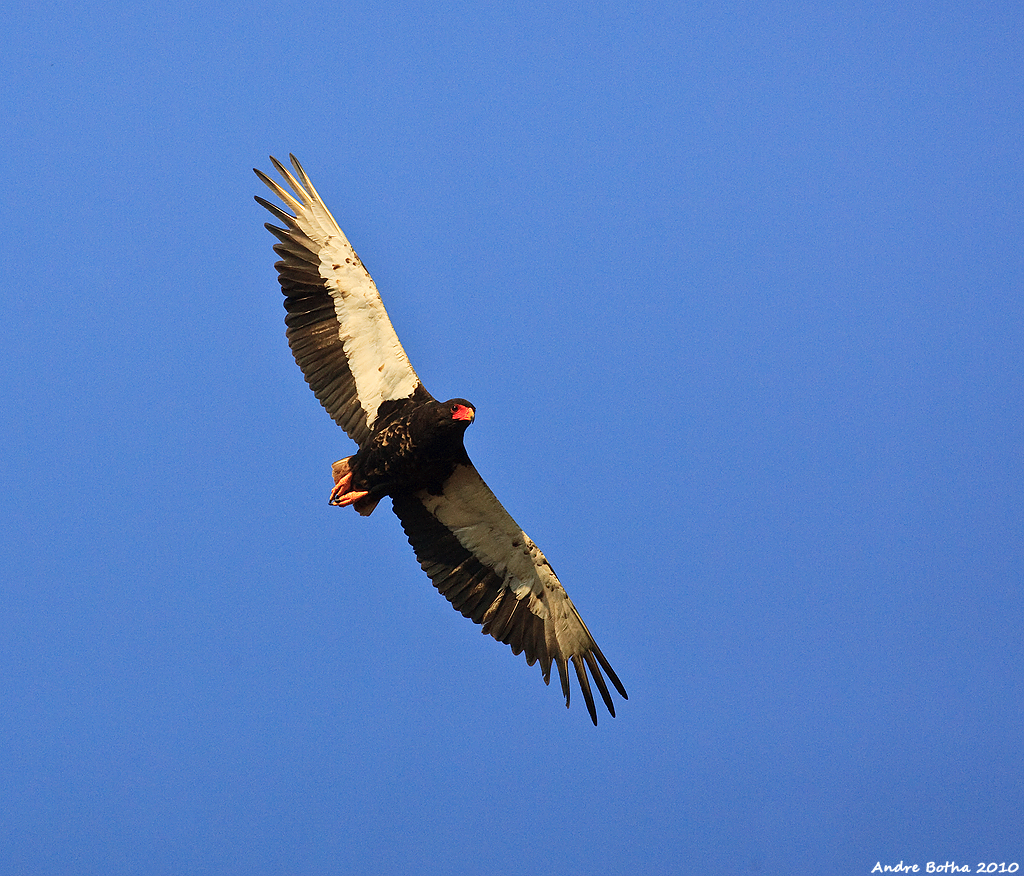
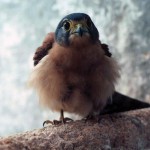
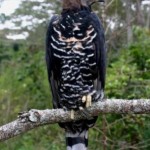

thanks Markus and Andre. Despite the many conservation concerns, it is great to know that southern African raptors are in such good hands and bringing the raptorphiles together as you have Andre is a major achievement – please keep up the good work!